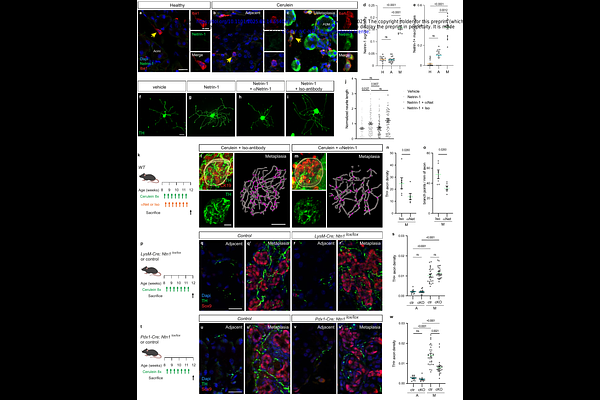Neural function of Netrin-1 in precancerous lesions of the pancreas

Neural function of Netrin-1 in precancerous lesions of the pancreas
Haidar, H.; Bellon, A.; Sleiman, K.; Hocine, M.; Rama, N.; Gadot, N.; Carpizo, D. R.; Mehlen, P.; Mann, F.
AbstractThe nervous system undergoes dynamic structural remodeling to infiltrate cancerous tumors, contributing to their growth and progression. Emerging evidence indicates that neuroplasticity initiates early, with nerve terminals detecting and responding to tissue changes even during precancerous stages. Notably, dense sympathetic axon sprouting has been observed around pancreatic intraepithelial neoplasia (PanIN), a common precursor lesion to pancreatic cancer. However, the molecular signals driving this early neuroplasticity and its functional consequences remain poorly understood. Here, we identify the axon guidance molecule Netrin-1 as a key factor secreted by pancreatic cells within precursor lesions of pancreatic cancer. Netrin-1 promotes sympathetic axon growth and branching through its receptor, Deleted in Colorectal Cancer (DCC). Inhibition of Netrin-1 disrupts sympathetic axon remodeling while accelerating PanIN formation and progression, driven by increased precancerous cell proliferation. Furthermore, human pancreatic tissue analysis corroborates Netrin-1 expression in precursor lesions. These findings suggest that Netrin-1-driven sympathetic neuroplasticity plays a protective role in the precancerous microenvironment by modulating local cellular dynamics, providing new insights into early cancer progression.